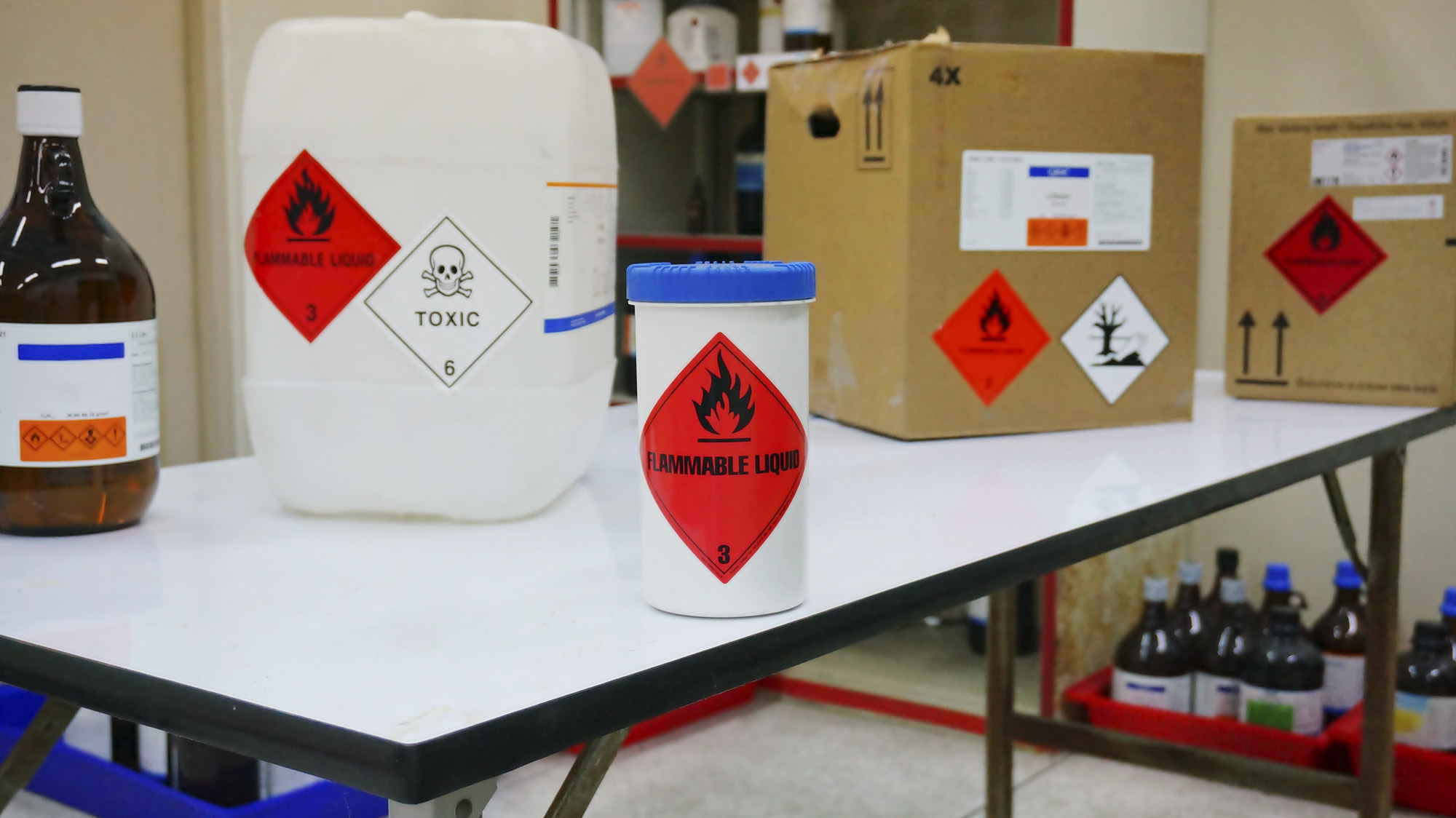
“What is considered a sample shipment of dangerous goods?” or “How do you ship samples of hazardous materials?” These are common inquiries we receive at MLI Environmental. A sample shipment of dangerous goods comprises small quantities of hazardous materials sent for testing, research, or quality control. Even though these shipments are small, they must adhere to regulations for safe transport and follow a specific procedure.
Determining Dangerous Goods
Dangerous goods, also referred to as hazardous materials or, in its abbreviated form, hazmat, consist of any material or substance that can cause potential harm to health, safety, and property during transportation. Recognizing such hazardous materials is crucial, as it enables appropriate packaging, communication, handling, and storage, thereby minimizing associated risks. It’s also the law.
The U.S. Department of Transportation (DOT) and the International Air Transport Association (IATA) categorize dangerous goods according to their unique chemical and physical properties. If you suspect your product could be hazardous, a helpful initial step is to obtain a Safety Data Sheet (SDS) from the manufacturer and review the “Transportation Information” section. This can offer essential details about the transportation risks associated with your materials.
The Necessity of Testing Samples
When a material or material waste is deemed hazardous, or the hazard class of a sample material is uncertain, it becomes necessary to determine its classification through testing. This process, if not crucial, ensures the proper handling, storage, and transportation of such materials following DOT regulations as outlined in the Code of Federal Regulations (CFR), Title 49, in Sections 100-185.
Once the testing is conducted, the material can be assigned a tentative proper shipping name. This name is an explicit identifier, providing crucial information about the material’s nature. Additionally, the material is assigned a hazard class, which is a category of hazard based on the specific chemical properties and potential risks associated with it. An identification number unique to the material is also allocated. This number serves as a universal identifier, aiding in the tracking and management of the material. Lastly, a packing group is determined. This grouping is based on the degree of danger the material poses, with ‘I’ representing great danger, ‘II’ representing medium danger, and ‘III’ representing minor danger. This comprehensive classification process is essential in ensuring safety and regulatory compliance in the handling and transporting potentially hazardous materials.
What If There is Insufficient Information About the Material
As mentioned, DOT regulations require shippers to accurately classify, name accurately, and adequately package hazardous materials before their offsite shipment. This procedure is necessary to ensure safety and compliance during the transportation process. However, some circumstances might challenge how to classify a hazardous material before shipping accurately. This issue could arise when sufficient information about the waste is lacking. One such scenario could be when a new type of hazardous waste is produced, but there is uncertainty about its characteristics. Another situation could be a hazardous waste spill or leak that mixes with other substances, soil, debris, or emergency response chemicals, making identifying the waste’s properties difficult. In such instances, sending a sample to a lab for analysis may be the best option to ensure safety.
The DOT provides specific guidelines to handle situations where you must ship a hazardous material sample or a substance with an uncertain hazard class that requires determination through testing. This exception for samples is found in 49 CFR 172.101(c)(11). According to these rules, you can temporarily assign the material a proper shipping name, hazard class, UN identification number, and packing group (if necessary). This temporary classification can be based on your preliminary understanding of the material, allowing for the transportation of the sample for further analysis.
Safely Ship Hazardous Samples with MLI Environmental
MLI Environmental realizes that sample shipments of dangerous goods can present unique challenges for any business, organization, or institution. Our dangerous goods experts can expedite the process if you have a hazardous material sample or substance that requires shipment for testing or analysis. Whether shipping by land or air, MLI will be liable for adequately packaging the material for you and generating the proper paperwork to ensure compliance with regulations. For more information on sample shipments of dangerous goods, contact us today!
Last updated on December 9th, 2025 at 10:00 pm
